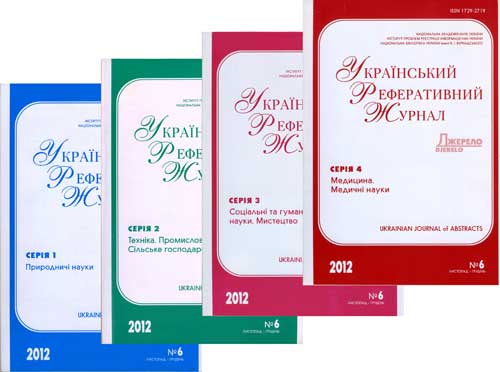Pashkevych V.
Studies of thermometric material Lu1-xZrxNiSb / V. Pashkevych, V. Krayovskyy, M. Rokomanyuk, P. Haranuk, V. Romaka, Yu. Stadnyk, L. Romaka, A. Horyn, D. Fruchart // Вимірюв. техніка та метрологія : міжвід. наук.-техн. зб.. - 2022. - Вип. 83 (ч. 1). - С. 10-16. - Бібліогр.: 9 назв. - англ.The results of experimental research of perspective thermometric material Lu1-xZrxNiSb which can be used for the production of sensitive elements of thermoelectric and electroresistive thermometers are presented. Thermometric materials Lu1-xZrxNiSb, x = 0,01 - 0,10, were made by fusing a charge of components in an electric arc furnace with a tungsten electrode (cathode) in an atmosphere of purified argon under a pressure of 0,1 kPa on a copper watercooled hearth (anode). Heat treatment of alloys consisted of homogenizing annealing at a temperature of 1073 K. Annealing of samples was carried out for 720 h in vacuumed up to 1,0 Pa ampoules of quartz glass in muffle electric furnaces with temperature control with an accuracy of +- 10 K. Diffraction arrays were obtained on a diffractometer DRON-4.0 (FeK<$E alpha> radiation), and the structural characteristics of Lu1-xZrxNiSb were calculated using the Fullprof program. The chemical and phase compositions of the samples were monitored using a scanning electron microscope (Tescan Vega 3 LMU). The study of the temperature dependences of the resistivity <$E rho>(T, x) and the thermopower coefficient <$E alpha>(T, x) Lu1-xZrxNiSb was performed in the temperature range of 80 - 400 K on samples in the form of rectangular parallelepipeds measuring ~ 1,0 x 1,0 x 5,0 mm<^>3. Measurements of the values of the specific magnetic susceptibility <$E chi>(x) of Lu1-xZrxNiSb samples were performed by the relative Faraday method at a temperature of 273 K using a thermogravimetric installation with an electronic microbalance EM-5-ZMP in magnetic fields up to 10 kGs. Microprobe analysis of the concentration of atoms on the surface of Lu1-xZrxNiSb samples, x = 0,01 - 0,10, established their correspondence to the initial compositions of the charge, and X-ray phase analysis showed no traces of extraneous phases on the sample diffractograms, except for the main phase. The nonmonotonic nature of the change in the values of the unit cell period of the thermometric material an(x) Lu1-xZrxNiSb, x = 0,01 - 0,10, which differs from the results of modeling structural characteristics using software packages AkaiKKR and Elk. The nonmonotonic change in the values of the period of the unit cell a(x) Lu1-xZrxNiSb and the presence of the extremum dependence suggests that the impurity Zr atoms introduced into the matrix of the LuNiSb basic semiconductor can simultaneously occupy partially different crystallographic positions in different ratios. The temperature resistivities <$E rho> and the thermopower coefficient <$E alpha> of the LuNiSb base semiconductor contain high- and low-temperature activation regions, which is characteristic of doped and compensated semiconductors. The introduction into the LuNiSb structure of the lowest concentration of impurity Zr atoms in the experiment (x = 0,01) radically changes both the behavior of the temperature dependences of the resistivity <$E rho> and the thermopower coefficient <$E alpha> and the type of the main electric current carriers. The values of the resistivity <$E rho>(T, x) Lu1-xZrxNiSb only increase with increasing temperature, which is characteristic of the metallic type of electrical conductivity and is due to the mechanisms of scattering of current carriers. This nature of the change in electrical resistance <$E rho>(T, x) is evidence that the Fermi level <$E epsilon sub F> has left the bandgap <$E epsilon sub g> and is in the conduction band <$E epsilon sub C>. This is indicated by the negative values of thermopower coefficient <$E alpha>(T, x) at all concentrations and temperatures. Studies of the magnetic susceptibility <$E chi>(x) showed that the samples as a basic semiconductor LuNiSb, as well as the thermometric material Lu1-xZrxNiSb, at all concentrations of impurities Zr, are Pauli paramagnetic. There is a synchronicity of the behavior of <$E chi>(x) with the dependences of the resistivity <$E rho>(x, T) and the thermopower coefficient <$E alpha>(x, T), which is due to the change in the density of states at the Fermi level g(<$E epsilon sub F>). The results of experimental studies of the Lu1-xZrxNiSb thermometric material completely coincide with the results of modeling its kinetic characteristics under the presence of vacancies in the crystallographic positions 4a and 4c of the Lu and Ni atoms, respectively.
Індекс рубрикатора НБУВ: З32-5
Рубрики:
Шифр НБУВ: Ж70321 Пошук видання у каталогах НБУВ
 Повний текст Наукова періодика України Повний текст Наукова періодика України
Додаткова інформація про автора(ів) публікації:
(cписок формується автоматично, до списку можуть бути включені персоналії з подібними іменами або однофамільці)  Якщо, ви не знайшли інформацію про автора(ів) публікації, маєте бажання виправити або відобразити більш докладну інформацію про науковців України запрошуємо заповнити "Анкету науковця"
|

